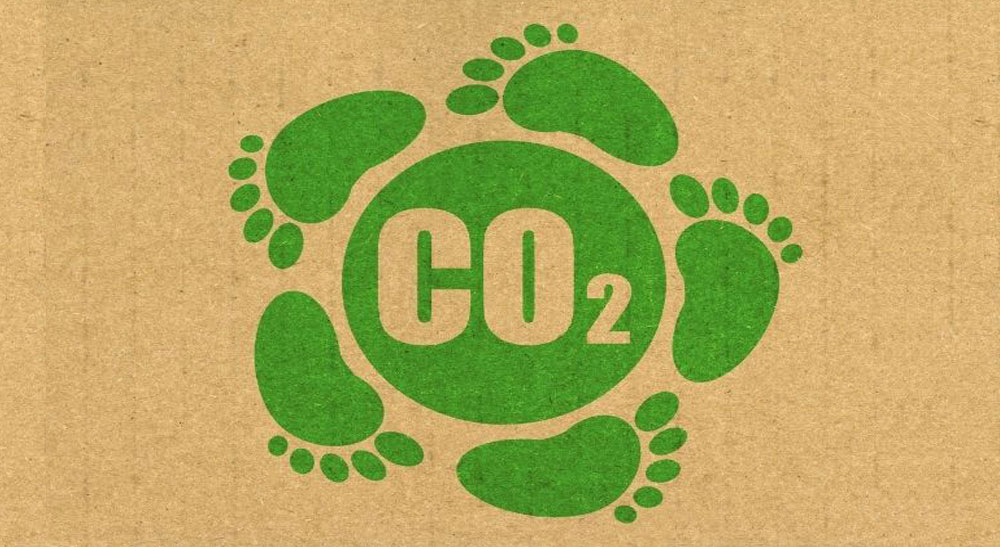The word “carbon footprint” has become a buzzword in the world of environmental studies. But what exactly is carbon footprint and why does it matter to us?
Putting it most simply, a carbon footprint is the measure of greenhouse gas emissions like Carbon Dioxide and Methane by an individual, organization, or country.
The unit for measuring carbon footprint is tonnes of CO2e (Carbon Dioxide Equivalent). In 2020, when the pandemic hit, global CO2 emissions reduced by 5.8% but were expected to rebound by 4.8% in 2021! Well, we cannot control the rising economic demands but we surely do have an individual part to play in reducing the global carbon footprint. Here are six simple ways which you can implement to reduce your carbon footprint.
How to Reduce Your Carbon Footprint
1. Prefer Eating Plant-Based Food
What we consume in our daily life contributes a lot to our carbon footprint. Consumption of meat and dairy products is a leading cause of climate change. By following a plant-based diet, we can reduce our carbon footprint by up to 73%! If not giving up completely, we can try to avoid meat and dairy products wherever possible. Moreover, let us prefer eating local and seasonal foods rather than imported foods. This way, we can reduce our carbon footprint of packaging and export while supporting our farmers.
2. Rethink About Your Fashion Choices
Love to wear branded skinny jeans? Honestly, we all do. However, did you know a typical pair of jeans requires about 2000 gallons of water and textile dyeing is the second largest water polluter worldwide? The fashion industry is responsible for about 2-8% of carbon emissions. The feasible solution is switching to organic clothes made from natural materials such as linen, cotton, bamboo, etc. We should search for brands that are recycling old and unused pieces of cloth to make a low-waste fabric. These clothes/products might be a little expensive but lower than the expense of depleting our nature!
3. Composting at Home
The UNEP 2021 report states that 8-10% of global greenhouse gas emission is due to unused food. Reducing food wastage at multiple levels including manufacturing, retail, and household can have various benefits to the environment. One easy yet effective method to avoid landfilling from food waste is to start composting. While recycling our kitchen waste, we are also conditioning your lawn’s soil. Let us all begin composting at home.
4. Travel Wisely
It’s a no-brainer that the transport and automotive industries contribute heavily to greenhouse gas footprints. Some basic suggestions for wise travel include walking instead of driving to small distances, using public transport or pooling vehicles, or switching to electric vehicles! Plane travel has the most carbon emissions and you can reduce your carbon footprint by 80-90% by traveling in a train instead of taking a flight! There might be times you need to travel by air, so a smart hack is to book direct non-stop flights instead of multi-stop ones. It is because plane take-off and landing are responsible for most of the emissions.
5. Use Energy Efficient Electric Appliances
Electric appliances consume a majority of our home’s energy. LED bulbs utilize a lot less energy than incandescent light bulbs. We have to make sure to select appliances with lower energy ratings. Appliances manufactured before the year 2000 consume a lot more energy than later ones. So, let’s try to replace old heavy electronics such as refrigerators, television, and air conditioners with newer models. Let us all use electricity wisely and turn it off when not required.
6. Eliminate Single-Use Plastic
Single-use or disposable plastics are those that can be used only once before throwing away. Common, single-use plastics include polythene bags, straws, plastic bottles, food packaging material, etc. Plastic based on petroleum is non-biodegradable and causes greenhouse gas emissions at landfills and oceans. We can always check the grade of plastic used to make the product on the label. Grade 2 is considered the safest of all plastic types and is easy to recycle. (You check all the plastic grades and their impact on the environment here.) Moreover, eco-friendly options for almost every product are available online these days, so prefer them over plastic products.
The Ending Note
Apart from all the above techniques, an efficient way to reduce carbon footprint is switching to renewable energy sources such as Solar Power, Electric Vehicles, and Wind Power.
Need help with Solar designing and EV charging? Get in touch with Finulent today! Bringing down your carbon footprint is an easy one step at a time process; but every step counts!

